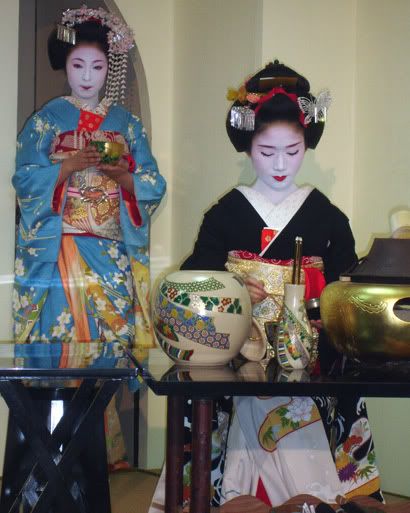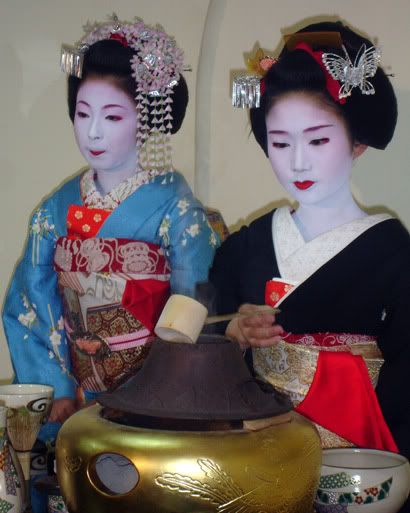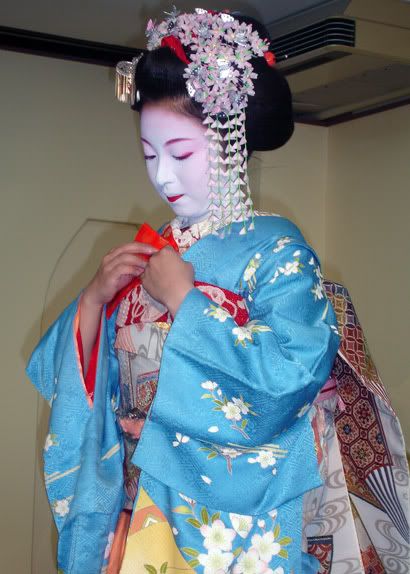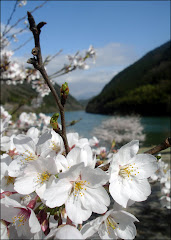
I just realized that I never posted any of my pictures from Kyo Odori ( 京をど), Miyagawa-cho`s spring dance. Miyagawa is one of Kyoto`s five geisha districts, or flower towns, as the Japanese say (gohanamachi 語花町 : 'go' meaning five, 'hana' meaning flower, and 'machi', meaning town).

Before the dance we watched as a high rank maiko and a young apprentice preformed sado ( 茶道 ), or Tea Ceremony. 'The Way of Tea', sado is a highly ritualized method of meditation and reflection that was seen as a means of achieving enlightenment. Every movement is deliberate and meaningful, anchoring the mind in the present to keep it from wandering away from the task at hand.

The young girl performing tea ceremony, Fumiko, was the most beautiful maiko I have ever seen, in Gion or elsewhere. Young Kimika, draped in a breathtaking virgin blue kimono, was stunning as well . I couldn't take my eyes off them.

As a maiko in her first year of service, Kimika does not yet paint her upper lip.




5 comments:
OMG, these are amazing! I'm so jealous, as usual...Why can't I ever do cultural stuff and go to tea parties? I'm like Alice in Wonderland, just chasing the white rabbit all the time. Except the rabbit is pink, and it's got a beak! Nova usagi daikirai!!
Dear Alice,
I've been thinking about this Nova usagi of which you speak...Rabbits with beaks? Sounds more like the devil! Abunai yo! You should be running in the opposite direction, say, towards LA!
And about the cultural 'stuff', I got your back girl! Thats why You are gonna flee the usagi and come to Gion Matusuri with me! Tanoshimi!
Maiko is the word for apprentice geiko in Kyoto, so the one wearing the colorful blue kimono is the apprentice, and the one dressed in black is the senior geiko (geisha is the term used outside of Kyoto; geiko being the preferred term there). In Tokyo, apprentice geisha are called hangyoku.
You said "gohanamachi" meaning 5 flower towns, but you used the kanji for "language" rather than the one that means five.
Did you maybe mean 五花町? Or is it a special character used in that phrase?
Ooops! That was a mistake. The 'go' is definately 五 as in five. Thank you for bringing it to my attention, anonymous!
Post a Comment